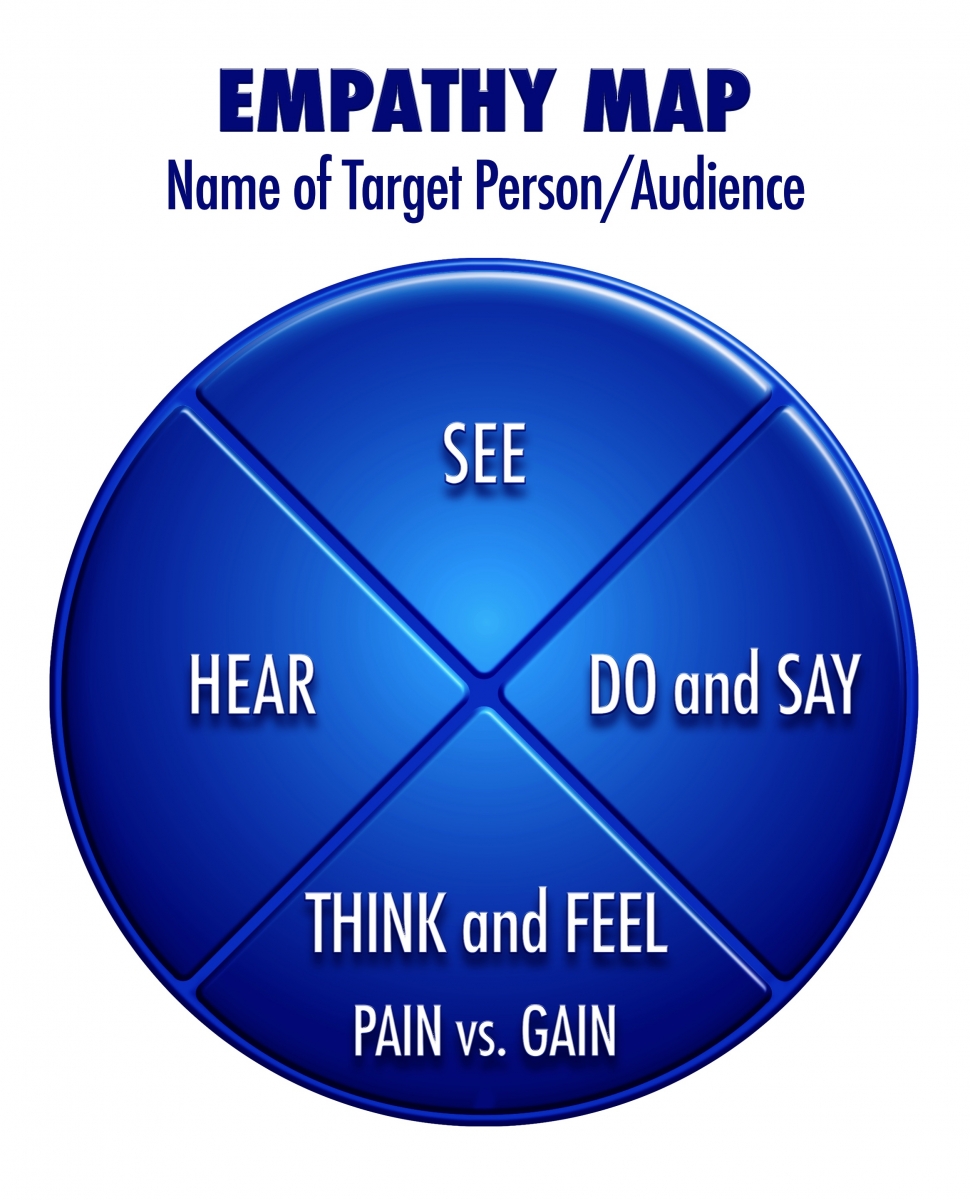I remember delivering what I thought was a great presentation—which totally flopped. The audience had expectations that differed from my learning objectives, and clearly did not get what they needed. They were dissatisfied, and I knew it. In hindsight, I realized I had seriously misunderstood my audience.
A successful presentation, training program, or change management strategy all share a common theme: a deep understanding of the impact on an individual or group.
Empathy Mapping is a powerful visualization approach that helps ensure project success by creating a clear understanding of the individual’s or group’s perspective, need, or experience.
The foundation to Empathy Mapping is:
1. Identifying the audience or individual to be trained or influenced. In this stage, you identify concrete characteristics such as job, age, geographic location, job tenure, etc., that describe your audience.
2. Deciding what you want your audience or “target” to do—such as demonstrate a behavior or skill, or take an action. This includes identifying the outcome that will define success.
Once you know who you’re targeting and what you want them to do, use an Empathy Map to help predict participant reactions to training or a presentation, or the leverage points that will influence them to take action.

CREATING THE EMPATHY MAP
STEP 1: Do your research based on the goal you want to achieve, and use the two foundation steps to define your focus. Then find data to inform your perspective. For example, to understand the audience for a leadership training program, you might review engagement surveys and interview key stakeholders.
STEP 2: Use your research to understand the target’s behaviors. To do this, use the Empathy Map to array your insights:
- What do they SEE? What visually surrounds them? Who are they watching? Are they seeing people succeed or fail? What are the visible consequences of success or failure?
- What do they DO and SAY? What do they talk about to others? Do their behaviors match their words? Are their actions driven by a specific stimulus or is it a general pattern of behavior?
- What do they HEAR? Are there conversations with key stakeholders that influence what they do? What do they hear firsthand and through rumor?
- What do they THINK and FEEL? Review the first three factors, and infer how the target individuals might feel in regard to the course, presentation, or initiative. What might they find motivational? What might they see as obstacles or better alternatives? What might cause them PAIN versus GAIN?
STEP 3: Take the data and assign the findings to each of the four perspectives. This often can be done using a brainstorming approach. Enter your findings into the Empathy Map, so they are visible and linkages can be discerned. What’s critical here is understanding the target’s perspectives and issues. Don’t get hung up on “what box does this go in?”
STEP 4: Use your insights to help achieve your goal, and create action plans to mitigate the obstacles and fears that might derail your efforts.
Great trainers know the importance of audience analysis and understanding. That insight will help you to successfully support your clients’ success.
Ross Tartell, Ph.D., is currently adjunct associate professor of Psychology and Education at Columbia University. Dr. Tartell also consults in the areas of learning and development, talent planning, and organization development. He received his M.B.A. in Management and his Ph.D. in Social Psychology from Columbia University. He formerly served as Technical Training and Communications manager – North America at GE Capital Real Estate.

